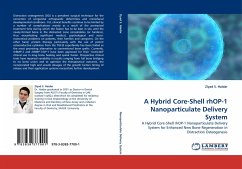Brain Computer Interface (BCI) is a communication system between human brain and a computer or a peripheral device which by recording brain signals directly would send messages and commands from the human brain to computer. According to brain activity patterns of EEG, BCIs are divided into different types. The most important of these patterns called ERP (Event Related Potentials) which appears after particular events in the EEG signal. A significant ERP pattern is P300 potential. It occurs when patient recognizes oddball stimuli. SSVEP (Steady-State Visual Evoked Potential) is another type of patterns and is response of the brain to optical stimulations with certain frequencies and a strong spectral component with the same frequency can be observed in the spectrum of brain signals. Combining various types of BCI systems is called hybrid BCI and increases the efficiency of BCI system. In this project, our concentration is on a hybrid P300-SSVEP Speller BCI system in order to enhance the accuracy. The aim of this project is to design a BCI system based on P300 and SSVEP patterns, which sequentially can be able to rectify the weakness points of the conventional BCIs. Our hybrid BCI sy








